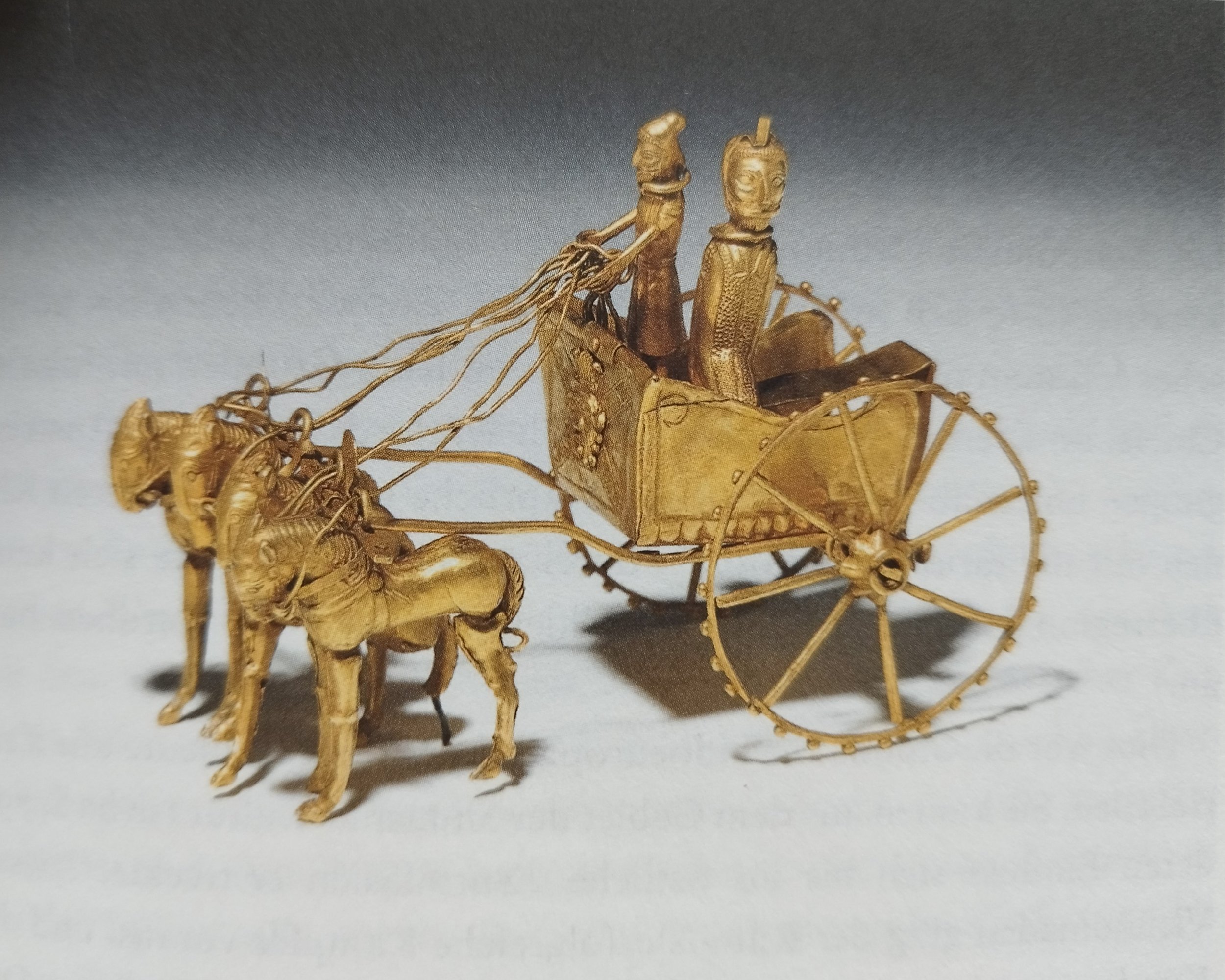The Wheel and the Wagon – a groundbreaking invention from the fringe of Old Europe
Some consider the wheel to be the most important invention in history. For others, writing holds that title. In any case, both innovations have been crucial for the development of cultural history. Countless works have already been written about the effects the wheel and its invention have had, so why bring it up again here? New research findings indicate that the wheel originated in an entirely different place than what is taught at schools. The first wagons actually traveled across Europe many hundreds of years prior to Mesopotamia in the Middle East.
The wheel was originally in use not as part of a wagon, but as a potter's wheel. The earliest findings point to an eastern region of Old Europe where farmland and steppe meet - what is now modern-day Western Ukraine. The potter's wheel was created around 4700 BCE, at least 500 years before its reported use in Mesopotamia. It's no wonder that the wagon and the wheel originated in the same region, as the technicians of Old Europe were already familiar with the wheel's utility.
There was a period in history when Old European farmers were in contact with and traded with the steppe nomads of Eurasia. Their peaceful co-existence lasted from around 3800–3200 BCE. The farmers and nomads had common interests. For both groups, the means of transport in everyday life were limited. Both were in need of good transportation vehicles for moving loads from one place to another. Farmers had wooden sleds with which they transported tools, seeds, and pots to fields, and with which they brought harvested grain from the fields. The sleds were drawn by either oxen or people themselves. The nomads had horses, so they transported their loads on horseback. On journeys lasting several days, one had to unload the cargo in the evening so that the animals could rest, and reload in the morning. This was both laborious and complicated.
In Old Europe's earliest cities, in modern-day Western Ukraine, farmers and nomads cooperated on mutual technical projects. They had a breakthrough around 3500–3400 BCE, resulting in something completely transformational: the wheel and the wagon. Owing to this innovation, the developmental pace of world history began to accelerate.
As this new technology – the wheel and the wagon – facilitated the transportation of larger loads, more extensive migrations also became possible. The largest migration of Indo-European nomads was the third migration (Kurgan III) in about 3200–2800 BCE, when a large group of people wandered from the steppe into Southeast and Central Europe and also eastward, into Central Asia and Siberia. We know that the Indo-Europeans were belligerent people, and they further developed transportation technology by inventing war chariots around 2000 BCE. This signified a revolution in warfare. For centuries, the chariot was an army's most important and effective war machine.
Miniature sculpture of a chariot from the Oxus gold treasure (Tajikistan, fifth century BCE).
After the invention of the wheel, the technology spread rapidly, moving westward from Eastern Europe towards Central Europe, eastward into Asia, Mesopotamia, India and China and, slightly later, southward to Ancient Egypt. Since then, the invention has brought about a whole series of further innovations, such as the pulley for drawing water from a well, the cogwheel, the clock, the watermill, the windmill and the spinning wheel. Later on came the steam engine, the bicycle, the car, train, airplane, carousel, and myriad other devices.
It's important to note that the wheel and the wagon were initially developed due to an intercultural encounter. Innovative representatives from two distinct cultures partook in a common endeavor. While the Old Europeans had excellent technological know-how, the nomads possessed hard wood, an important material necessary for building wheels. Cultural interactions can be very beneficial when they happen in a spirit of peace and innovation, and when improving living conditions is a mutual goal.
Harald Haarmann and Auli Kurvinen
Read this blog in Finnish here.

